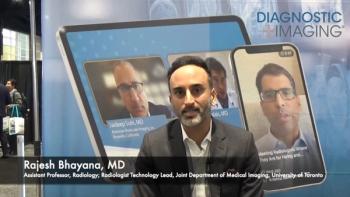
Diagnostic Radiologists Do More Than Interpret Images
On-site diagnostic radiologists interacrt with referring physicians, staff, and patients, expanding their role beyond reading images.
Diagnostic radiologists are central figures in the medical imaging department as their role goes beyond image interpretation, according to a study published in the
The usual perception of radiologists is that they spend much of their time reading images. Researchers from the University of British Columbia and the Fraser Health Authority, both in Vancouver, Canada, undertook a prospective, observational, randomized study to quantify the type of value-based interactions experienced by radiologists on a regular basis.
A trained observer followed and recorded the activities of 14 staff diagnostic radiologists in three hospitals (one tertiary care academic facility and two community-based facilities) in October and November 2012. Approximately 154 work hours were monitored.
The results showed that diagnostic radiologists spent only 36.4 percent of their time on image interpretation, with the rest of their time devoted to non-interpretive tasks, such as protocol requisitions, supervising and monitoring studies, performing image-guided procedures, consulting with physicians, and directly caring for patients.
The researchers noted that total clinical productivity was 87.7 percent and the radiologists experienced, on average, six interactions per hour with other health personnel. Interruptions were sometimes as frequent as 12 times per hour.
These findings demonstrate that diagnostic radiologists play an important role on a daily basis, which indicates that their presence on-site provides added value to the facilities.
Newsletter
Stay at the forefront of radiology with the Diagnostic Imaging newsletter, delivering the latest news, clinical insights, and imaging advancements for today’s radiologists.




























